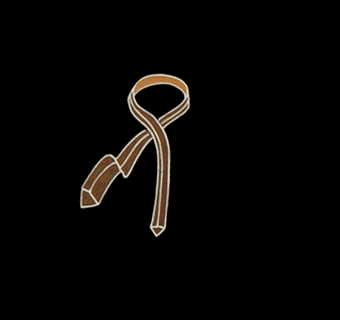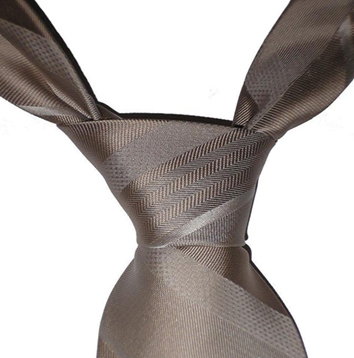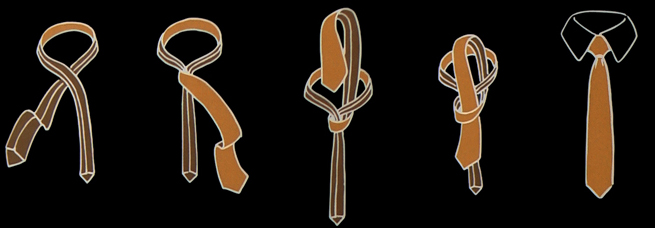 This node just seems to be simple, as compared with the Four-in-hand yet it binds to fewer movements. In fact, it is a little harder it nicely formed. It is worth it to apply primarily to tie with thick material.
This node just seems to be simple, as compared with the Four-in-hand yet it binds to fewer movements. In fact, it is a little harder it nicely formed. It is worth it to apply primarily to tie with thick material.
For the first time the node was described by Fink and Mao. They claim that in Asian countries oriental node is as popular as the Four-in-hand in Europe and the USA.
Since the node oriental requires only three movements, is generally cited as the first advisors stylists, but despite its simplicity, is not necessarily the most suitable for beginners. Its small elegant shape that makes it perfect for thick and woolen ties can only be achieved through exercise. As a newcomer should start from the junction Four-in-hand or Kent.
Important
- – Before the bond is assumed to tie around the neck seam to top (outside).When a node is ready, the wider end of the tie is rotated to the right side, but the rest remains on the left and has to be well hidden under the shirt collar.
- – It is easy to loosen the tie knot and therefore must be carefully tied and founded
- – Because it is crossed only once, a very small part of the tie is “used”.Often, with narrow or wide end of the tie is too long. For this reason, the node is suitable for large men.
How To Tie An Oriental Knot
In a few words
- – Inverted (base form)
- – Slightly asymmetrical, soft
- – Small collar
- – For thick ties
- – Only suitable for woolen neckties
- – Does not resolve itself
- – For tall men

